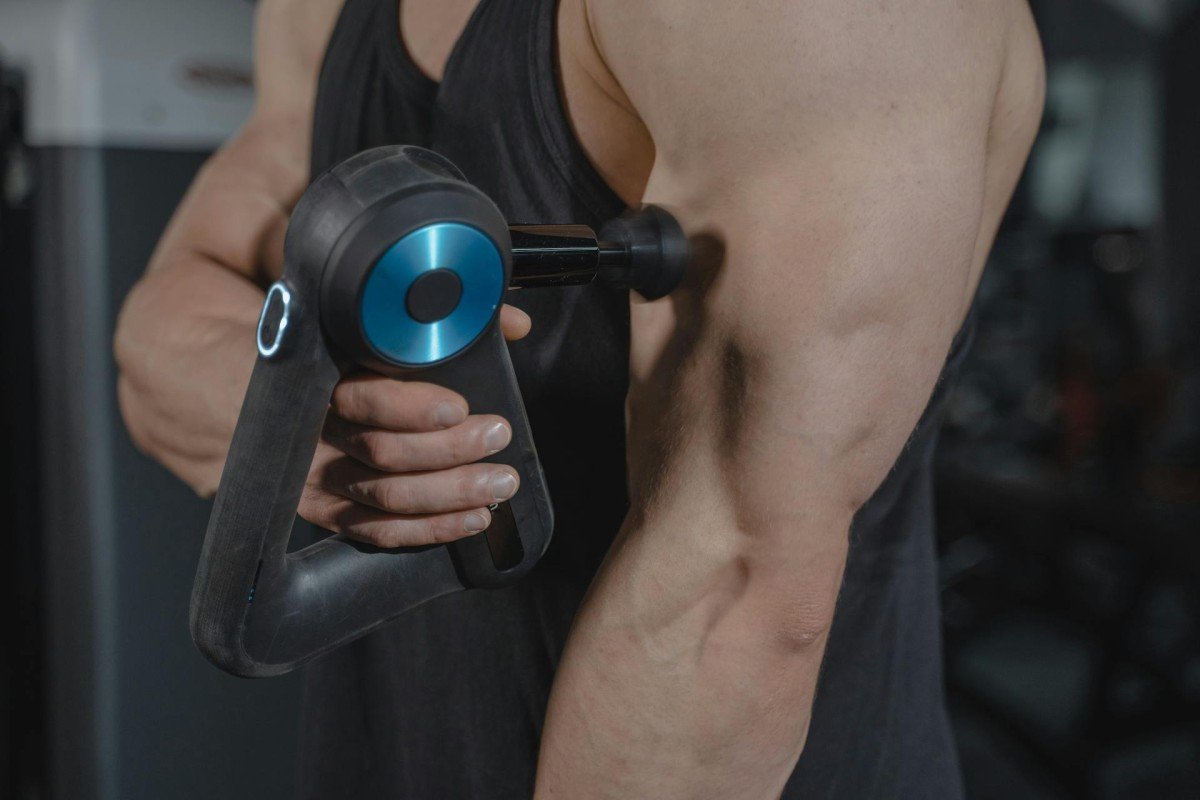💪 Sore Today, Strong Tomorrow
That satisfying post-workout soreness means you're pushing your limits, but too much can slow your progress. Whether you’re lifting, running, or trying a new routine, knowing how to recover faster and reduce muscle soreness is essential to staying consistent and injury-free.
Let’s break down the best recovery strategies so you can bounce back stronger, move with ease, and keep crushing your fitness goals, without the burnout.
💧 1. Stay Hydrated for Faster Recovery
Water = muscle magic.
💦 After exercise, your body needs extra water to flush toxins, transport nutrients, and repair muscle tissue.
✅ Tips:
-
Drink 16–24 oz of water post-workout
-
Add electrolytes if your workout was intense or sweaty
-
Sip fluids throughout the day, not just after training
🛌 2. Prioritize Rest & Sleep
Muscles grow while you rest, not while you train.
😴 Aim for 7–9 hours of quality sleep each night to allow your body to rebuild, restore, and reset.
🌙 Boost your sleep game:
-
Power down electronics 30 mins before bed
-
Sleep in a cool, dark room
-
Try magnesium or herbal tea to unwind
🥗 3. Fuel Your Body with the Right Nutrition
Eat to repair, not just refuel.
🍗 Protein helps rebuild muscle fibers. Carbs restore energy. Healthy fats reduce inflammation.
🍽️ Post-Workout Plate Should Include:
-
✅ Lean protein (chicken, eggs, tofu)
-
✅ Complex carbs (sweet potatoes, oats, quinoa)
-
✅ Healthy fats (avocado, olive oil, nuts)
🎯 Aim to eat within 30–60 minutes after working out.
🧘 4. Stretch & Move Gently
Motion is lotion for sore muscles.
Light movement increases blood flow, which speeds healing and reduces stiffness.
🧘 Try:
-
Yoga
-
Light walking
-
Dynamic stretching or mobility flows
🕒 10–15 minutes is all it takes to help reduce soreness.
🧊 5. Use Cold or Heat Therapy
Simple tools = powerful recovery.
Ice reduces inflammation. Heat soothes tight muscles and improves flexibility.
🔄 Alternate Techniques:
-
❄️ Ice bath or cold shower for intense soreness
-
🔥 Heating pad or warm bath for tension relief
-
💧 Contrast showers (hot/cold) to stimulate blood flow
💆 6. Foam Rolling & Massage
Break up knots. Boost circulation. Feel amazing.
Foam rolling is like a deep tissue massage at home. It helps release tight fascia and reduce delayed onset muscle soreness (DOMS).
🌀 Tools You Can Use:
-
Foam roller
-
Massage gun
-
Lacrosse ball for pinpoint pressure
🎯 Roll slowly over sore areas for 30–60 seconds each.
🚶 7. Don’t Skip Active Recovery Days
Recovery is part of the plan, not a break from it.
Instead of total rest, do low-intensity activities to stay mobile and improve recovery.
✅ Try on off-days:
-
Walking or hiking
-
Swimming
-
Gentle cycling
-
Light resistance band work
💊 8. Supplement Smart (If Needed)
Support recovery with science-backed tools.
While whole food is best, certain supplements can accelerate repair and reduce soreness.
⚡ Consider:
-
Whey protein or plant-based alternatives
-
BCAAs (branched-chain amino acids)
-
Magnesium for relaxation and muscle cramps
-
Omega-3s for inflammation
👉 Talk to a health pro before adding new supplements.
📆 Weekly Recovery Routine Example
| Day | Focus Area | Recovery Tip |
|---|---|---|
| Monday | Leg Day | Protein smoothie + foam rolling |
| Tuesday | Upper Body | Yoga + magnesium bath |
| Wednesday | Active Recovery | Light walk or bike ride |
| Thursday | HIIT or Core | Hydrate + heat pad on tight spots |
| Friday | Full Body | Contrast shower + stretching |
| Saturday | Active Recovery | Foam roll + nutritious breakfast |
| Sunday | Total Rest | Sleep in + prep meals & water |
🎯 Recovery = Progress
You don’t get stronger by training nonstop, you get stronger by recovering better. Treat recovery as a vital part of your fitness routine, and your body will reward you with better performance, fewer injuries, and more energy to show up every day.
🔥 Remember: Progress isn’t always visible, it’s built in the quiet moments between the grind.



